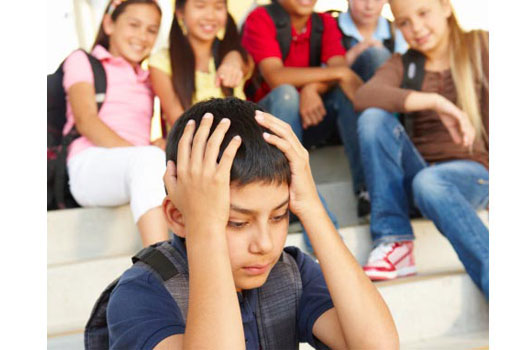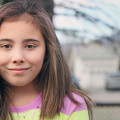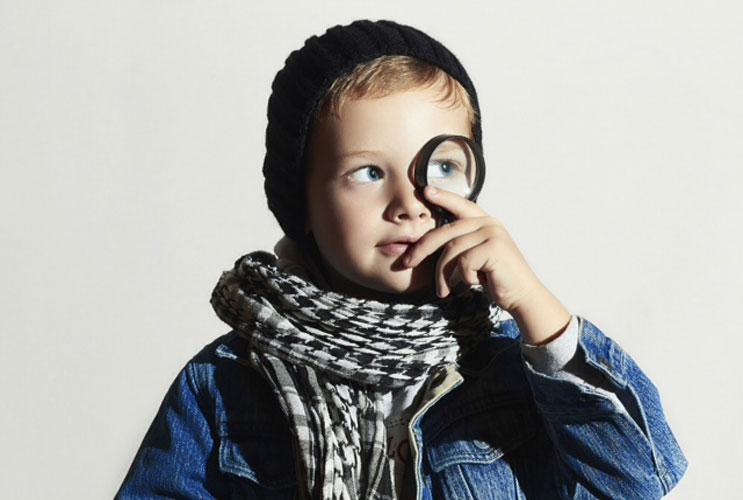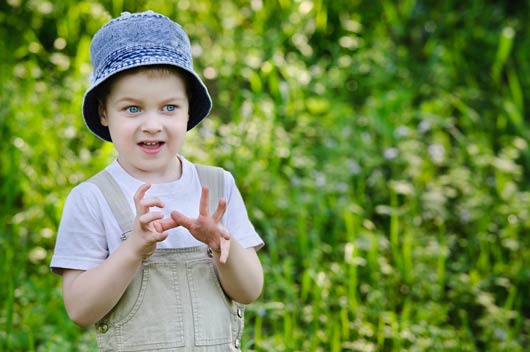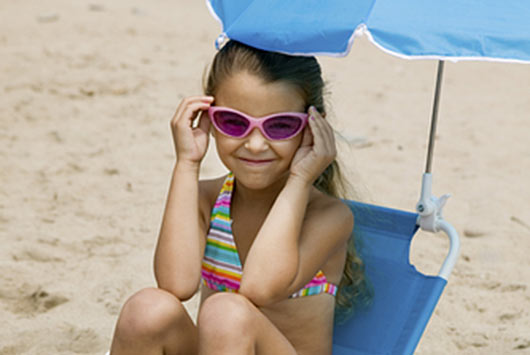
Kids are every bit as much at risk as adults for sunburn, sun damage and developing life-threatening skin cancers. And one place where kids are most exposed to the sun’s damaging rays is on the school playground. To combat these threats, Coppertone has launched the Making the Sunscreen Grade program, to help parents, kids and school officials take steps to protect kids. Dr. Ana Duarte, division director of dermatology for Miami Children’s Hospital, founder and president of the Children’s Skin Center and consultant to Coppertone, talks to Mamiverse about the program and just how dangerous the sun can be to young skin.
Mamiverse: Cases of melanoma in children are on the rise. To what do you attribute this increase?
Dr. Duarte: There are several possible factors that have contributed to the rising rates of childhood melanoma (2% increase per year), which includes an increase in exposure to UVA & UVB rays, earlier detection and an increase in the diagnosis of melanoma. It’s important to remember that while rare, melanoma does occur in childhood. Children at greatest risk are girls with fair skin and freckles, green eyes, and red hair. Having a history of blistering sunburns, a large number of moles as well as a family history of melanoma also increases the risk of melanoma. Girls more frequently have lower limb and hip involvement while boys have face and torso lesions. Boys tend to have a poorer prognosis than girls. But overall, the five-year survival rate has improved!
Read Related: 7 Summer Ailments Every Parent Should Be Prepared For

Mamiverse: Are there statistics/studies that quantify the risk of a child developing skin cancer later in life after prolonged sun exposure when young?
Dr. Duarte: According to the Skin Cancer Foundation, just one blistering sunburn in childhood more than doubles a person’s chances of developing melanoma later in life. Additionally, 23% of a person’s sun exposure occurs during childhood, so instilling sun protection behavior in children is of the utmost importance. In addition, parents should bring their children for regular skin checks at their dermatologist and learn to perform self-exams monthly. Unfortunately, diagnosis and treatment is often delayed in up to 40% of childhood melanoma cases.
Mamiverse: How much sun exposure is enough to cause skin damage in kids, either now or later? Or is the risk only from a blistering sunburn?
Dr. Duarte: Damage due to unprotected sun exposure is cumulative as the damage occurs over time. Cumulative sun exposure can result in skin cancer, most commonly basal cell carcinoma followed by squamous cell carcinoma and melanoma, respectively. Blistering sunburns result in immediate and severe damage to the skin and can increase the risk melanoma later in life.
Mamiverse: It never occurred to me that schools might impose restrictions on kids’ applying sunscreen. How should parents deal with this possibility?
Dr. Duarte: Many U.S. schools have rules and restrictions around the usage of sunscreen because it is an over-the-counter drug, among other reasons. Because school districts differ on policies, I recommend that my patients’ families check with their school administrator to find out more about their district’s policy on sun protection. The Making the Sunscreen Grade program helps to educate parents around the importance of sun protection for their child during the school day and year-round. Parents should learn what their school policy is and start the conversation with their school staff. Together, they can craft a sunscreen-reapplication program. Perhaps they can make this a topic of discussion at their next PTA meeting, as well.
I recommend that parents encourage their children to observe their surroundings to be sun-smart while at school. For example, they should use extra caution near sand, snow, concrete and water, since they can reflect up to 85% of sunlight and as a result, intensify sun exposure. I also tell my patients to help their children identify shaded areas during outdoor activities, whether shade structures at their school playground or trees in a backyard. Sun sense also begins at home, so parents should dress their kids in sun-protective clothing and make sunscreen application part of their morning ritual before the kids go outside and go to school.
For additional steps to ensure children are protected from the sun during the school day and year-round, parents can visit www.coppertone.com to download a free sun protection guide in English or Spanish. They can also download a sample letter to help them start the conversation with their school staff.
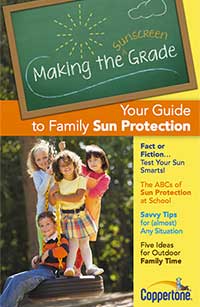
Mamiverse: How can parents get their kids to take sun protection/sunscreen application seriously?
Dr. Duarte: First and foremost, I like to tell parents to be a role model for their child. Making sun protection a priority for oneself as a parent can help children understand its importance. Secondly, parents should make sunscreen application fun for their children. Being sun safe doesn’t have to be a chore. A few ways they can do this is by helping their children learn what the UV index means or testing out the shadow rule with their kids on a sunny day. If their shadow is shorter than they are tall, UV rays are particularly strong.
Additionally, outdoor family time is a great way to pass on sun-savvy knowledge. Setting up a lemonade stand with children presents an opportunity to discuss the importance of remaining hydrated on a hot day and using an umbrella to shield themselves from the sun.
Mamiverse: Does the Making the Sunscreen Grade program offer recommendations of what strength of sunscreen kids should use? Does it vary based on the climate they live in?
Dr. Duarte: The Making the Sunscreen Grade program does not make a formal recommendation, however in conversations with my patients I always recommend they use a broad spectrum sunscreen with a SPF 30 or higher, which is the official recommendation from the American Academy of Dermatology. The southern United States has approximately 50% more sun exposure than the United States. However, I recommend that families use at least an SPF 30, no matter the climate.
Mamiverse: Is there any safe way to tan?
Dr. Duarte: UV radiation, whether from the sun or a tanning bed, is a known carcinogen and the resulting tan is a sign of sun damage. There are no “safe” ways to tan, other than the use of artificial, sunless tanners such as Coppertone Gradual Tan, which is a safe alternative.
Mamiverse: Any advice she has specific to Latinas? Are their risks the same, or lesser because of darker pigmentation? How can they know what grade of sunscreen to use?
Dr. Duarte: At my practice in Miami, I see many Hispanic patients with diverse skin tones. Many of these patients tend to think that only fair-skinned people need to be concerned about sun exposure. While darker or more olive-colored Hispanics are somewhat less susceptible to skin cancer, they are still at risk. In fact, late-stage melanoma diagnoses are more prevalent among Hispanic and African Americans. According to the Skin Cancer Foundation, 26% of Hispanic patients receive an initial diagnosis of advanced stage melanoma, versus 16% of non-Hispanic white patients.
Mamiverse: Here’s a question concerning older kids. I grew up in a beach community where, as teenagers, we “baked” every weekend at the beach. How do we help image-conscious teens disassociate a suntanned look with beauty, and make them more aware of the dangers of tanning?
Dr. Duarte: There is an inherent need to educate today’s teens around the importance of sun protection and the dangers of tanning. Parents, pediatricians and dermatologists may want to frame their conversation by focusing on the known association between unsafe sun exposure and premature skin aging, wrinkling and most importantly, skin cancer. In fact, it’s important to remind teens that surgeries to remove skin cancer can also result in large sometime disfiguring surgical scars.
As an alternative, I always recommend that my patients use sunless tanning lotions or artificial spray tans, which can provide the same sun-kissed glow, safely.


